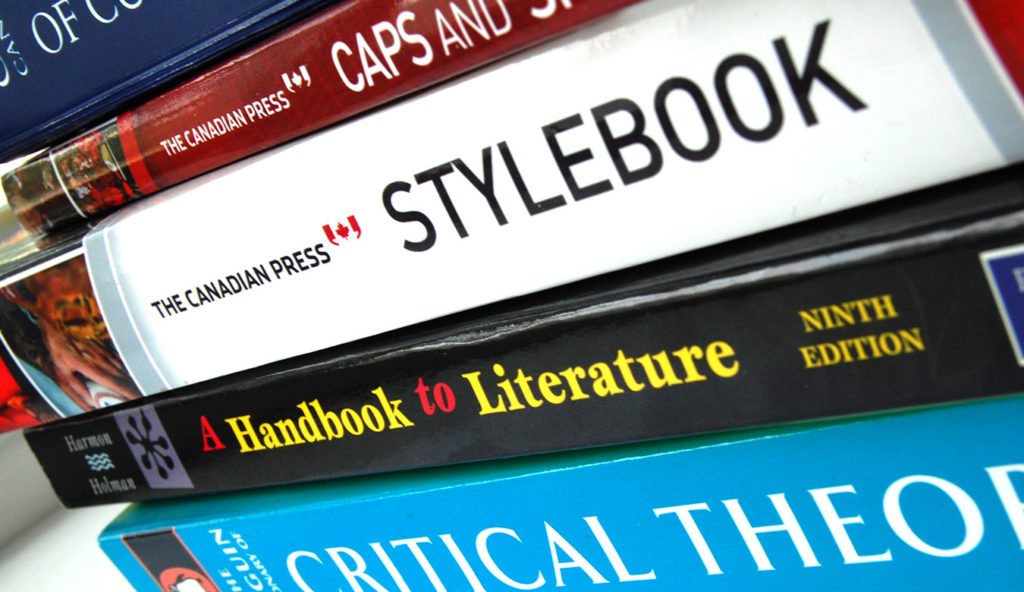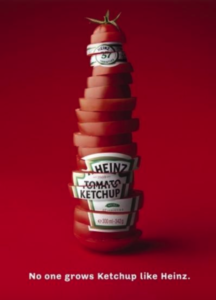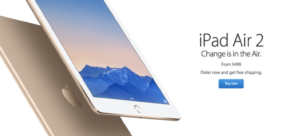Yes, there’s a word for that: the literary devices that make marketing tick

I’m an English major.
As such, my bookshelves are stacked with style guides, dictionaries, and technical references that most would pawn off at their next yard sale without batting an eye. Not me.
Some, I consult on a monthly basis. Some, a few times a year. Others, several times a week.
There’s one book that’s been collecting dust since I graduated university. It’s my little black book of literary devices.
And I feel a little bad for it.
At first, I feared it had outlived its use, now that I no longer dissect passages of poetry and prose in return for good grades. After all, how often do I really use synecdoche and metonymy in everyday life?
Well, it turns out we use these devices a lot. Yes, our literature is rich with them, but so is our marketing and advertising.
So let’s crack this book open together and see what devices are at work behind the scenes.
Some words just sound good together
A catchy name, slogan or phrase can go a long way, helping us remember a message and sometimes struggling to get it out of our brains. There’s a lot that goes into perfecting our prose, and looking at the relationships between words (and their sounds) is a biggie.
Best supporting devices:
- Alliteration: When nearby words start with the same letter or sound.
- Colliteration: When nearby words start with letters that are closely related, like b and p.
- Consonance: When nearby words end in the same consonant, vowel or sound.
- Assonance: When nearby words contain the same vowel sound anywhere inside them.
- Cadence: The rhythm of sound in a sentence or phrase, from stressed and unstressed syllables to the rise and fall of our voice.
In seven words, a former Wall Street Journal slogan – The Daily Diary of the American Dream – managed to pack in alliteration (the “d” in daily, diary, dream), colliteration (the vowels in of, American) consonance (the ending “ee” in daily, diary), and assonance (the “ee” again in daily, diary, dream).
Repeat it again and again (and again)
Repetition is a cornerstone of marketing. We want certain messages – and sometimes words – to stick out among the rest. Using them over and over helps us remember, and helps search engines find us. Sometimes it even moves us to feel a certain way or take action.
Best supporting devices:
- Anaphora – When you repeat the same words at the beginning of each line, clause or sentence.
- Polyptoton – When you use different words that share the same root, like “strong” and “strength”.
- Antanaclasis – A repeated word that carries two different meanings, often as a pun.
- Antimetabole – Repeating a series of words, in reverse grammatical order.
- Motif – A recurring word or phrase that unifies a work.
- Parallelism – The repetition of a similar sentence structure in a work.
Molson’s infamous “I am Canadian” rant from 2000 was so iconic it won awards, spawned parodies, and ended up in a poetry anthology. It repeats a punchy parallel structure throughout that makes it especially memorable.
In other words
At their most basic, metaphors invite a comparison between two things, with the understanding that traits from one apply to the other. They do a lot of heavy lifting, too, from creating unforgettable moments to explaining otherwise difficult ideas. And they come in many shapes and sizes.
Best supporting devices:
- Analogy – Explaining something unfamiliar by comparing it to something more familiar.
- Simile – A direct comparison between two objects, usually using “like” or “as”
- Synecdoche – When a part of an object stands in for the whole.
- Metonomy – Replacing an object with something that’s closely related to it.
- Antonomasia – Swapping a proper name in for a general idea that it represents.
- Eponym – Using a person closely related to an idea or attribute to stand in for that idea or attribute.
Heinz nailed the synecdoche game with its UK ads showing a bottle of ketchup made of tomatoes. The goal was to show just how fresh its product is, using the key ingredient to represent the whole product with a fun visual twist.

I get that reference
We can draw on existing works for inspiration and recognition. Making references to current events, pop culture, and other things our audiences already know has a few benefits. It makes us seem attentive, up-to-date, and involved in the conversation. It allows us to create emotional associations that are relevant to our customers. And it creates highly sharable moments.
Best supporting devices:
- Allusion – A reference to an object, person, event, quote or other work.
- Pastiche – A work that respectfully imitates the style of another artist or creator.
- Parody – A work that comments on or makes fun of another piece through imitation.
We’re used to seeing ad parodies on shows like SNL, or in our YouTube recommendation list. But Ikea enjoyed almost 19 million views on its “Experience the power of a bookbook™” ad parodying the kinds of announcements we’re used to seeing from Apple.
Asking the right questions
Questions are great because they prompt engagement and dialogue. In marketing copy, they should put readers one step closer to choosing you or taking an action. We use them to sound conversational, to incite emotion and lead our logic forward. Oh, and catch a little attention, too. (Going overboard can make you sound a little sketchy though, so use these sparingly.)
Best supporting devices:
- Rhetorical question – A question asked only for effect or emphasis, with no answer expected.
- Hypophora – When you ask a question and immediately give an answer.
- Anacoenesis – Asking a question as if you’re looking for an answer or opinion
- Procatalepsis – When you anticipate a question and answer it before it’s asked
Rhetorical questions were the basis of a Geico campaign that ran from 2009 to 2012. Each ad featured the same opener: could you really save money with Geico? And each question was followed up with another, reinforcing the implied answer of both: yes.
Getting clever
We tend not to get too cutesy with our content. Too much fluff and not enough substance, and all that jazz. But there’s room for wordplay when it serves a purpose. We remember funny things or clever things that catch our attention, and some brands have absolutely nailed it in their marketing.
Best supporting devices:
- Paradox – A statement that contradicts itself, but might still be true.
- Oxymoron – A self-contradicting word or group of words.
- Pun – A joke based on a word having more than one meaning, or words that sound alike.
- Enallage – Intentionally substituting one grammatical form for another, like a noun for a verb.
- Neologism – A new word introduced to enhance style, sometimes by adding a suffix like -pocalypse or -gate.
It’s hard to miss wordplay like Apple’s pun on “air” in this iPad Air 2 ad – not to mention its partner tagline, “Love is in the Air.” It works especially well since it departs from the common expectation of meaning.

Trust me, I could go on. There are a lot of devices that pop up in our everyday lives. Some are pretty well known, while other are quite obscure. It was hard to choose a handful to share, but I hope this gives you an idea of just how far literary nerdiness can get you when it comes to figuring out what makes good marketing tick.
Special shout-out to A Handbook to Literature by William Harmon and Hugh Holman.
